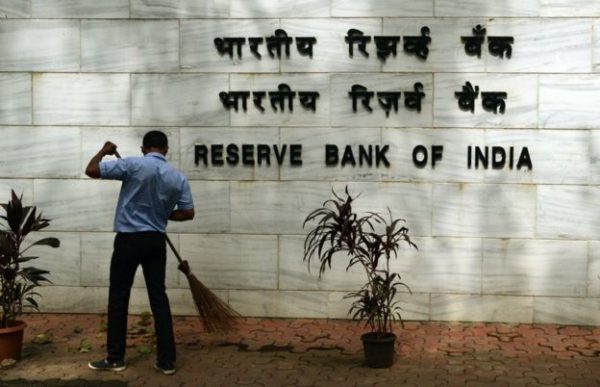India’s economy grew at its slowest pace for three years in the April-to-June quarter and growth has declined for six quarters in a row. Economic analyst Vivek Kaul explains why one of the world’s fastest growing economies is sputtering to a halt.
On Monday, Prime Minister Narendra Modi revived India’s economic council, a body that he had abolished soon after coming into power in 2014.
India has just seen its slowest economic growth since Mr Modi took over as the prime minister on the back of promises over more jobs and a stronger economy.
For the period between April and June 2017, Indian GDP grew by just 5.7% (as against 9.1% a year earlier).
Much of that 5.7% was because the government spent more than it usually does. The non-government part of the GDP, which forms roughly 90% of the economy, grew by a meagre 4.3%.
Industry as a whole grew by 1.6%, with manufacturing and construction growing by 1.2% and 2% respectively.
The last time the economy grew by less than 6% (at 5.3%) was between January and March 2014, when Manmohan Singh was the prime minister.
We live in a world where any rate of growth greater than 2% is considered to be good. But what is true for Western countries isn’t necessarily true for India.
India’s GDP needs to grow at a rate faster than 7% for the country to continue to pull millions out of poverty.
“Even a small change in the growth rate of per capita income makes a big difference to eventual income per head,” writes economist Vijay Joshi in India’s Long Road – The Search for Prosperity. This is what economists call the “power of compound interest”.
And how would things look for India by 2040 at different rates of economic growth?
According to Joshi: “At a growth rate of 3% a year, income per head would double, and reach about the same level as China’s per capita income today. At a growth rate of 6% a year, income per head would quadruple to a level around that enjoyed by Chile, Malaysia and Poland today. “If income per head grew at 9% a year, it would increase nearly eight-fold, and India would have a per capita income comparable to an average high-income country of today.”
Agriculture, which accounts for around 15% of GDP, continues to employ half the country’s workforce.
But exports between April and August 2017 are lower than they were in 2013 and 2014. There is also India’s so called demographic dividend – 12 million young Indians are entering the workforce every year.
But given the lack of a good education, most of these young people need low-skilled jobs, which the construction and real estate industries can provide. With both sectors growing at the rate they are, where will the jobs come from? The services sector continues to grow robustly, but it still needs support from industries like construction.
Even those industries that have the potential to create many jobs, such as apparel manufacturing, continue to operate on a small scale because of India’s convoluted labour laws.
A recent report, Ease of Doing Business – An Enterprise Survey of Indian States, published by a federal institute, found that 85% of the firms operating in the apparel sector employed less than eight workers.
In fact, 85% of Indian manufacturing firms employ less than 50 workers.
The government feels that it has done enough to reform labour laws, and it is now the industry’s responsibility to set up labour-intensive enterprises.
But as the data suggests, Indian industry continues to favour capital-intensive, rather than labour-intensive, methods of expansion. As a result of all these factors, India has huge underemployment.
Numbers from 2015-2016 suggest that only three out of five people looking for a job throughout the year are able to find one.
The situation is worse in rural India, where only one in two are successful.
Demonetisation (a surprise government decision to cancel 86% of India’s currency) has also made things worse – many firms operating in the cash-only informal sector, which created so many jobs, had to shut down.
And the Goods and Services Tax, a major overhaul that replaced numerous federal and state taxes with a single tax rate, hasn’t helped either.
The other big worry is that India’s largely government-owned public sector banks are in a mess. Seventeen of 21 banks have a bad loans rate of 10% or more (as of 31 March).
Bad loans are loans in which the repayment from a borrower has been due for 90 days or more. One bank (the Indian Overseas Bank) has a bad loans rate of 25%.
These bad loans are largely the result of lending to industry, where the overall bad loans rate stands at 22.3%.
The government has already pumped in close to 1,500bn rupees ($23bn; £17bn) as capital since 2009 to keep these banks going.
But with the banks continuing to accumulate bad loans, they are going to need billions more as capital to continue to operate.
The federal government does not have this money but it remains reluctant to privatise or even shut down some of these banks. A major impact of bad loans has been that public sector banks are now reluctant to lend to industry.
The Indian economy is suffering from many structural issues and if a long-term growth rate of 7-8% per year has to be sustained, these issues need to be tackled on a war footing.



Leave a reply